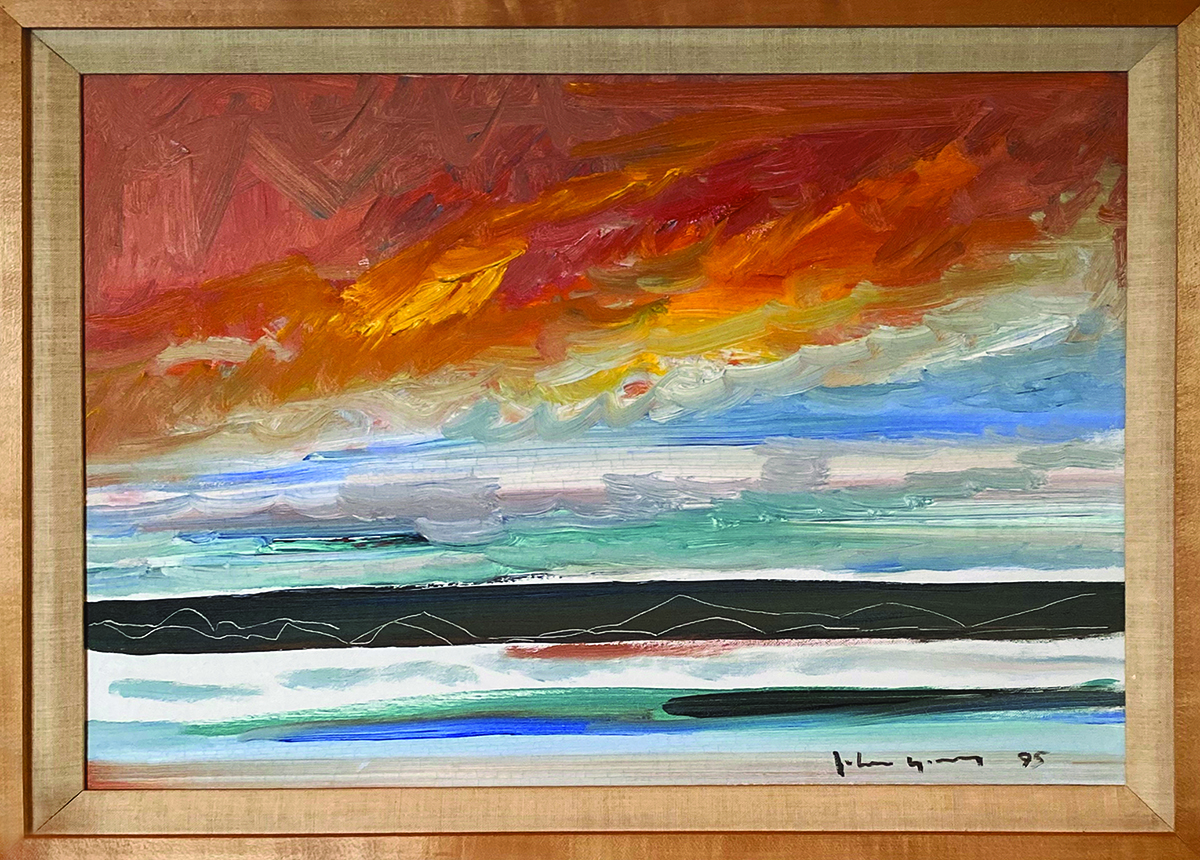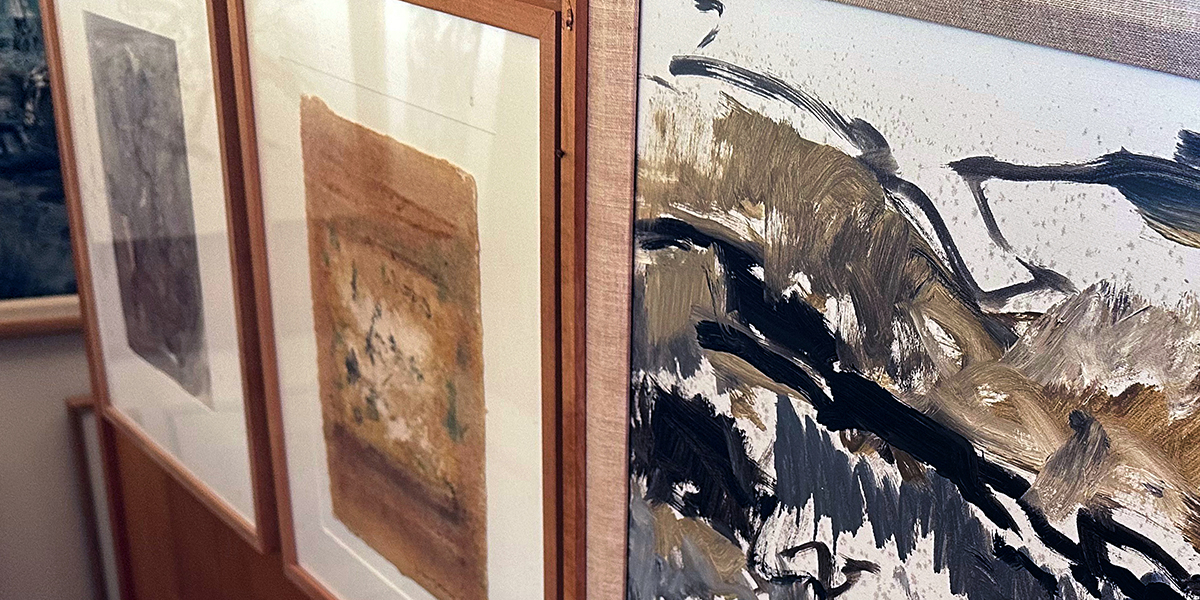Hawaiʻi-born painter John Chin Young expressed moments and motion in quick strokes, influenced by Chinese calligraphy he studied as a child. A few lines in black ink and a wash of color conveyed in seconds the essence of a stranger in a restaurant, a running horse, or a dear friend’s children.
“When you see a figure at a glance, at the fleeting moment, you just move and go,” he once said. “You have to capture it in your mind so when you draw it, you only capture the moment you saw it.”
He’d been drawing since he was a young boy, and art classes at McKinley High School were his only formal instruction. After graduating, he had his own gallery, the Beaux Arts shop on Bethel Street in downtown Honolulu, where he supplemented his income by painting signs for local businesses and selling art supplies to local painters. Esteemed Hawaiʻi artist Madge Tennent was a customer and admirer.
Young quickly became one of Hawaiʻi’s best-known and most accomplished artists.
He exhibited his work at the Corcoran Gallery of Art in Washington, D.C. and the Metropolitan Museum of Art in New York. He was included in shows at the Smithsonian Institution and the de Young Museum in San Francisco, and he had solo exhibitions at galleries and major museums in Hawaiʻi and on the U.S. West Coast. Tennent, reviewing one of these shows, wrote, “John Young’s painting is part of Honolulu’s contemporary art history. He has kept alive the age-old glory of his Chinese heritage, in a modern American technique and subject matter, taken from the good earth of his own hometown.”
Other critics said, “He can paint faster than the eye can follow,” and “His work sparkles with roguishness, subtle humor, and action.”
In his late 80s, he was the subject of three shows in Hawaiʻi, including a major retrospective at the Honolulu Museum of Art.

A gift of art for all times
“Young has an enthusiasm and curiosity of life and the world about him,” wrote an art critic in the Honolulu Advertiser. “He is an outgoing person who gives tremendously of himself to other human beings.” He taught classes at the Honolulu Museum of Art, known then as the Honolulu Academy of Arts, and he served as an officer of the Honolulu Printmakers. When he wasn’t exhibiting his work, he often adjudicated local art shows.
In 1976, when the Hawaiʻi Department of Education established Art Education Without Walls for local public schools, he welcomed 50 middle- and high-school students into his Diamond Head home. He shared his art collection, talked about his life as an artist, and demonstrated his skills in oil painting. “When I was young, I didn’t have a chance to talk with artists. I didn’t have the opportunity they have to talk with a painter about his life,” he said of his participation in the program.
Young established the John Chin Young Foundation so students would receive the formal art education he couldn’t afford in his youth. The Foundation primarily funds scholarships while also supporting programs nurturing the arts in Hawaiʻi.
When he died in 1997 at age 88, Young left much of his private art collection, gathered from years of travel and friendship with other artists, to the Honolulu Museum of Art and the University of Hawaiʻi at Mānoa, establishing the John Young Museum in Krauss Hall.
Soon after, the John Chin Young Foundation established the John Young Scholarships at four UH campuses — Windward, Leeward, Kapi‘olani, and Mānoa — for students majoring in fine arts, assisting with such costs as tuition, books, equipment and supplies. To date, the foundation has helped more than 500 students in their art education and pursuit of excellence.
The John Chin Young Foundation continues to support fine arts at UH with gifts to theater and dance programs, Hawaiian theater, special events, and campus galleries, including endowed funds for scholarships at UH Mānoa and for the Koa Gallery at Kapi‘olani Community College.
Angels in the gallery
As he struggled financially in his mid-20s, he considered giving up painting. Then “an angel walked through the door,” he said years later. A wealthy admirer from Kaua‘i praised his work and bought two seascapes he’d just completed for $150. Her friends, seeing his paintings in her home, also wished to own his work. “It was the right timing when I needed so much encouragement and support, and the funds to continue,” he told an interviewer.
He never again wavered in his determination to be an artist, which led to exhibiting his work worldwide and a lifetime of travel. Now, and into the distant future, these scholarships bearing his name will be a similar encouragement and inspiration for the University of Hawaiʻi’s promising artists.
“Everyone needs support and morale-building,” said Young. “Everyone needs, no matter what you’re doing, that kind of support, admiration, and encouragement.”
Questions? / More Information
If you would like to learn how you can support UH students and programs like this, please contact us at 808 376-7800 or send us a message.
